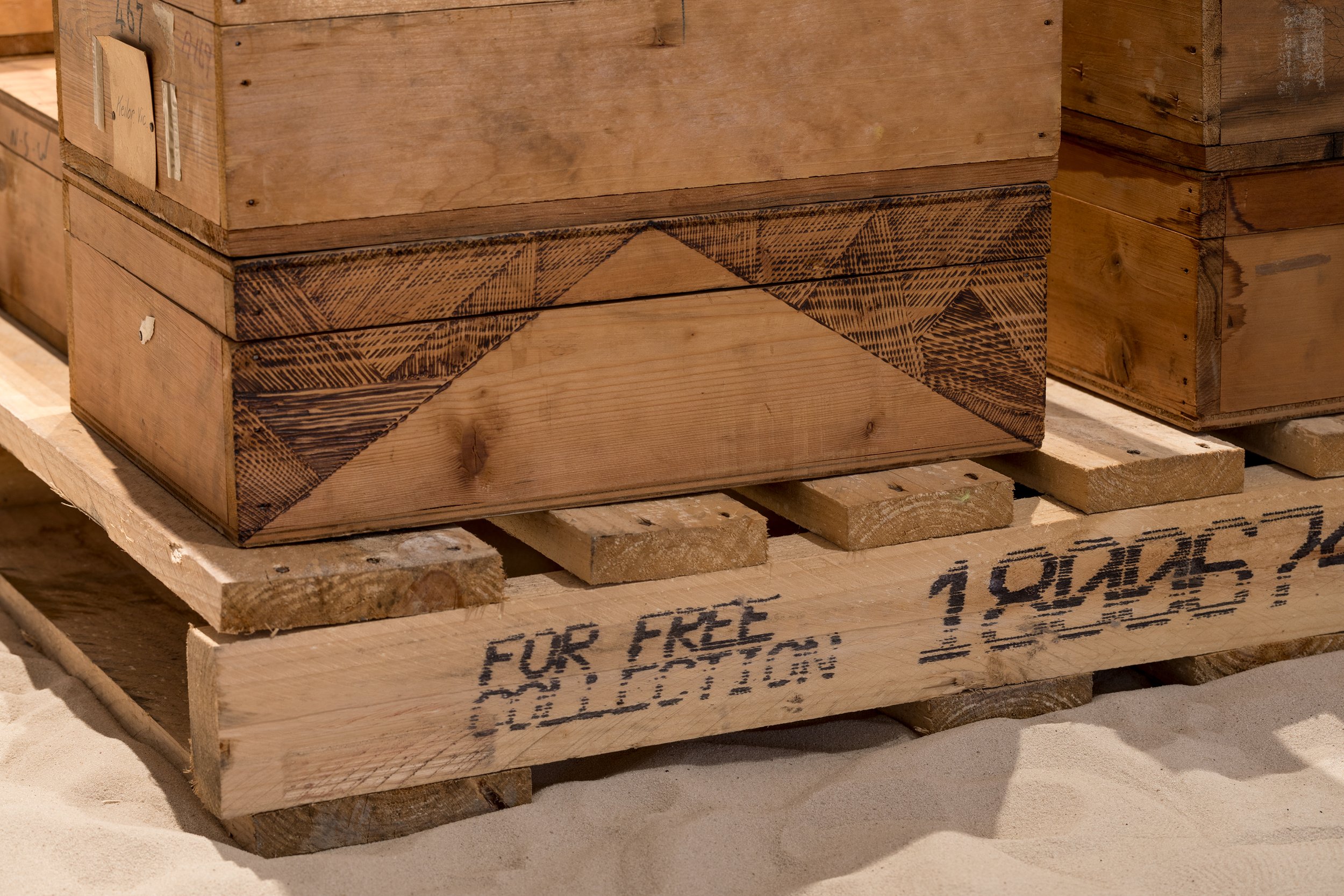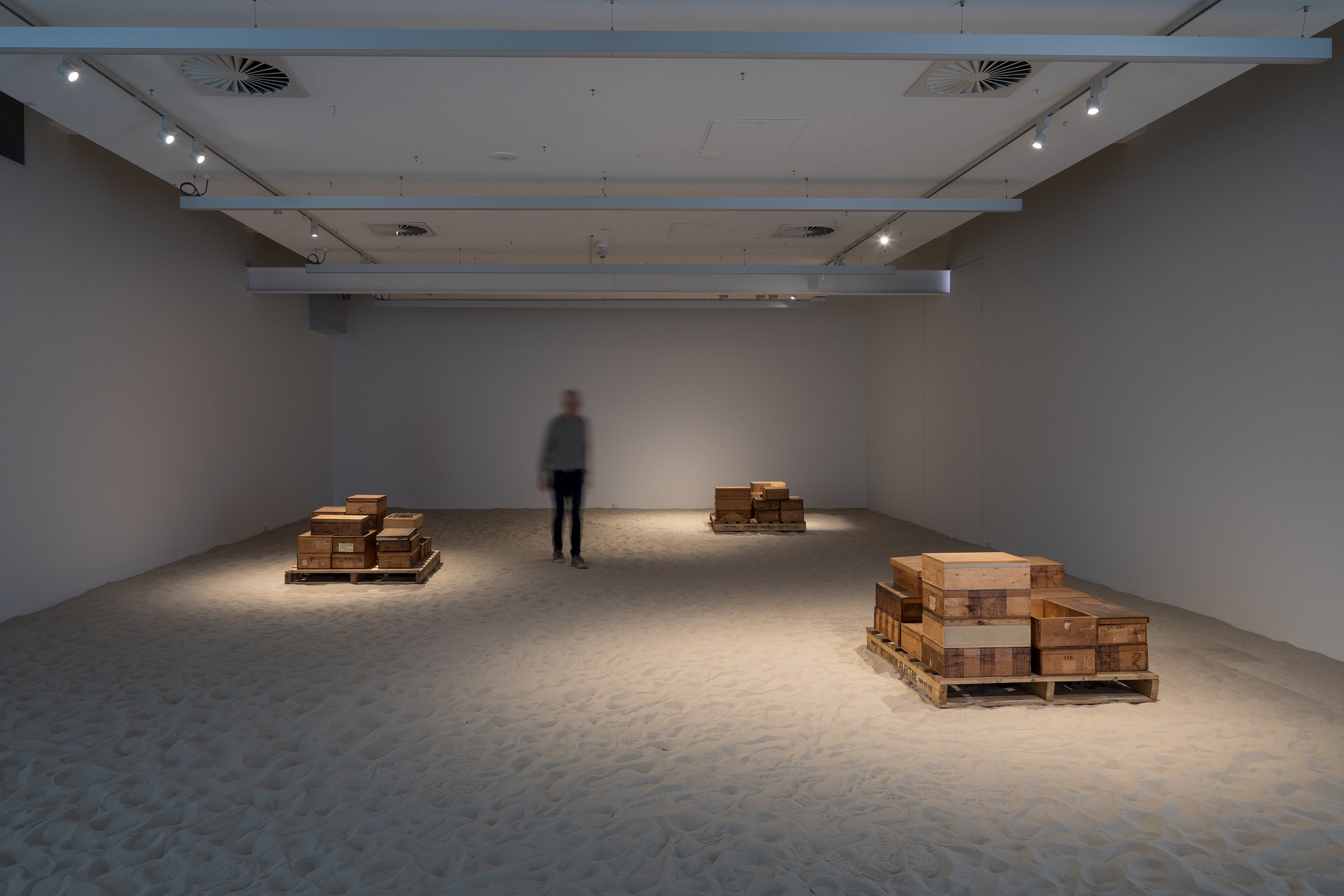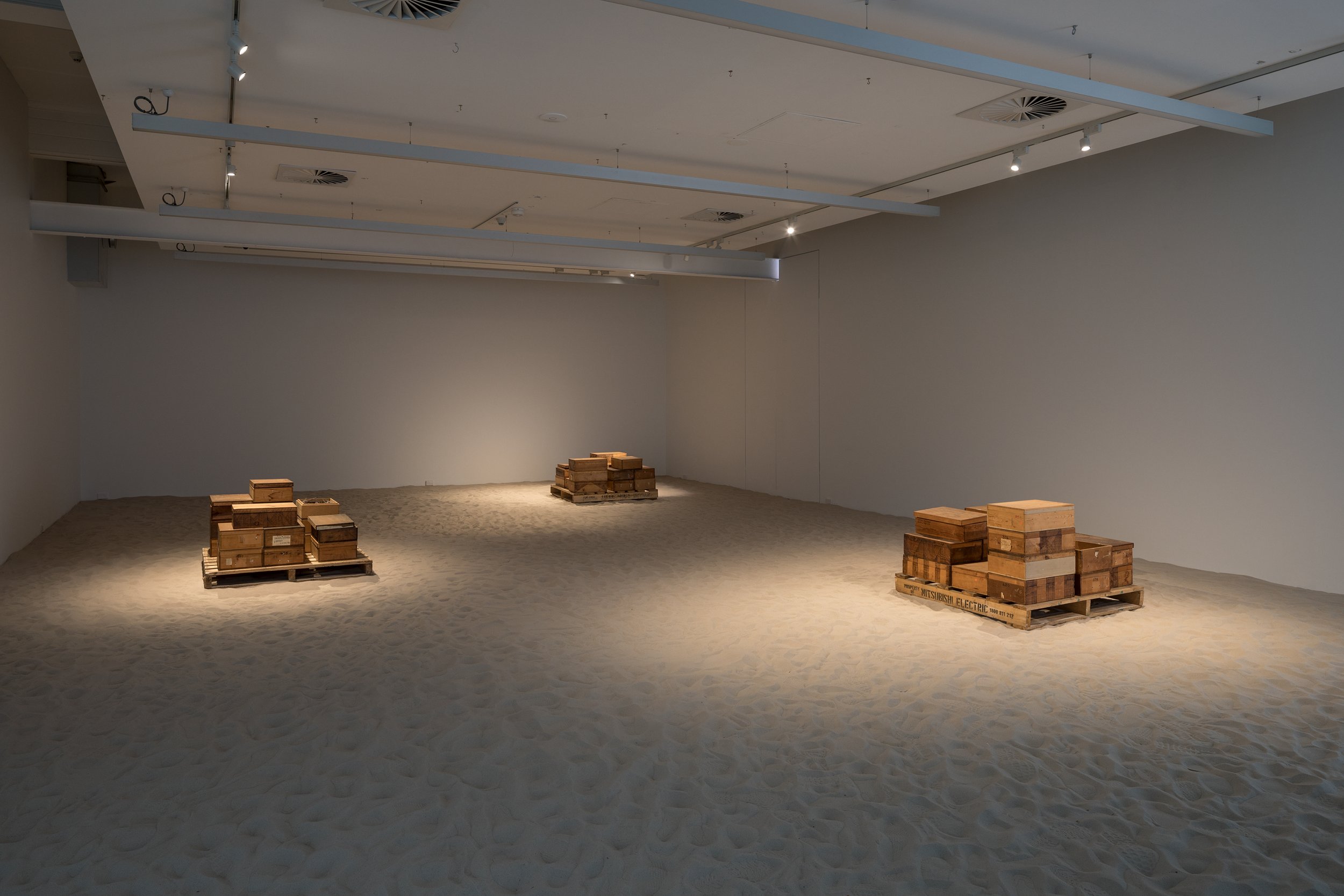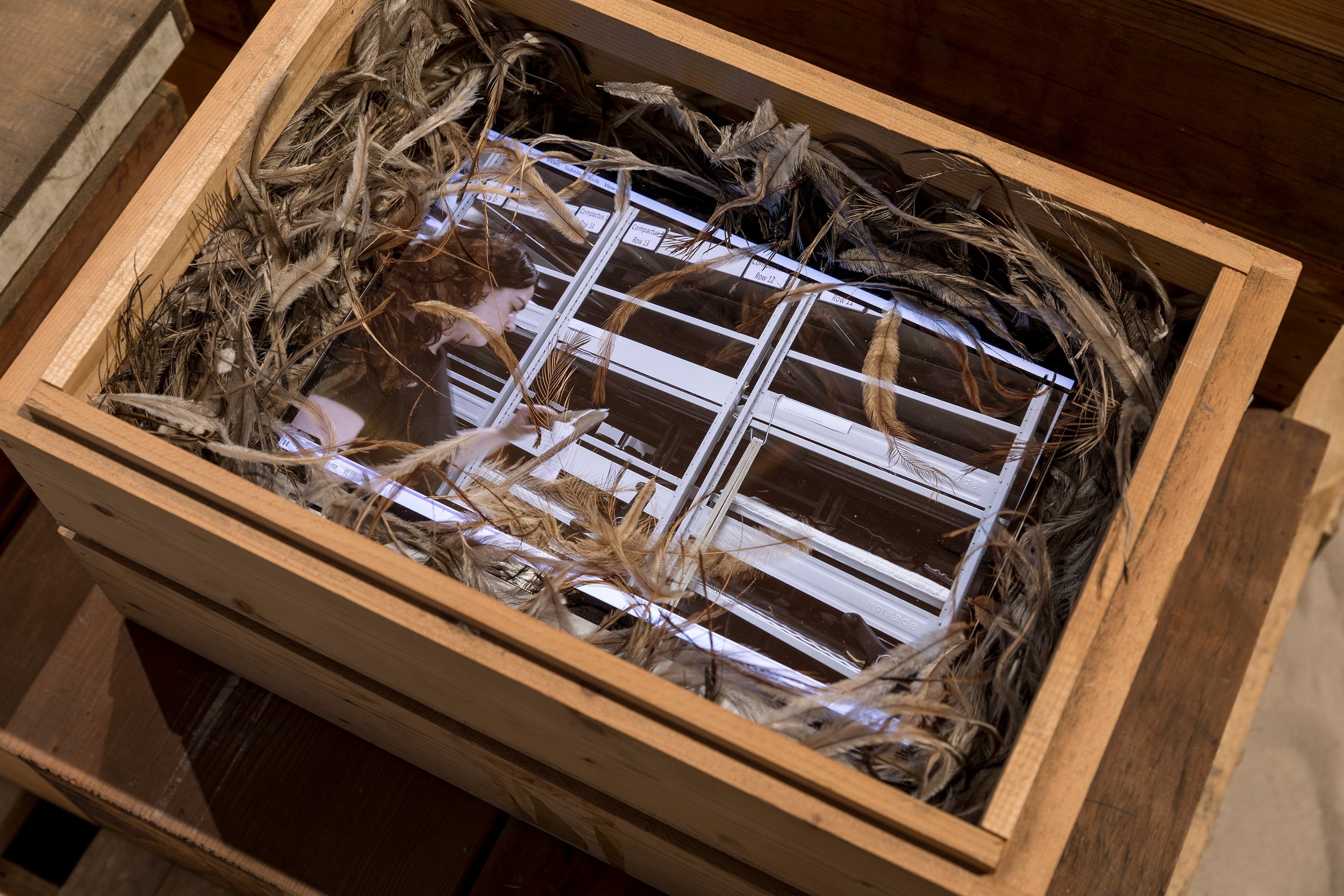
Code-Switching: Creating Space to Align Structural Values
Solo Exhibition by Moorina Bonini
1st - 4th of November, presented at MADA Gallery Monash University Caulfield
This research examines the ontological design of western institutions such as galleries, museums, and universities through practice-led and Indigenous-led research. The research was undertaken to determine if western institutions can be reconfigured through the Indigenous research methodology, wanyarra (active) code-switching and creative practice. The significance of this research is that it combines Indigenous knowledge and practice, being the immaterial and material, together through practice and research. I argue that the articulation of wanyarra (active) code-switching through practice transforms the ontological positioning of the viewer through embodied and immersive engagement with my practice.
The final exhibition takes place across two sites, being the Melbourne Museum Bunjilaka Aboriginal Cultural Centre and the Monash Art Design and Architecture Student (MADA) Gallery. The two chosen sites for the final exhibition are both western institutions, as one is a museum, and the other is a gallery. Although each site is a western institution, each space operates upon different structures. Therefore, having two different sites for the final exhibition is an opportunity to critique each institution through the examples of the final works. Having the final exhibition fall across two different sites at the same time speaks directly to the Indigenous research methodology developed within the research, wanyarra (active) code-switching and my dapalama (between) practice. This will see both bodies of work connect to each other across two different locations at the same time. This is important because the two bodies of work are not separated because they are the same cultural expression and materialisation. I argue that embodiment of the two bodies of work comes from moving in between the physical sites and in-between the two works. This physically puts the viewer in a position of dapalama (between). This is the significance of dapalama (between) practice as it materialises the in-between material of the material and immaterial.
The displayed wooden museum boxes were created to hold significance Indigenous South-East cultural material in the museum collection across the 1950’s, 1960’s and 1970’s that had been collected by anthropologists, ethnographers, farmers, regular people and donated to the museum collection or in some cases acquired by the museum. These wooden boxes are echoes of the violent acts of colonisation that occurred across our woka (country) and wala (water) to which we as a people are still recovering and healing from today. The burnt markings across the surface of the wooden boxes have been Informed by embodied cultural knowledge of mark-making. The historical and signifcant cultural practice of burning is used to reposition the narrative regarding these colonial containers. Indigenous cultural practice and knowledge is centred in this work that aims to acknowledge the dark history of historical over-collecting of Indigenous cultural materials.






